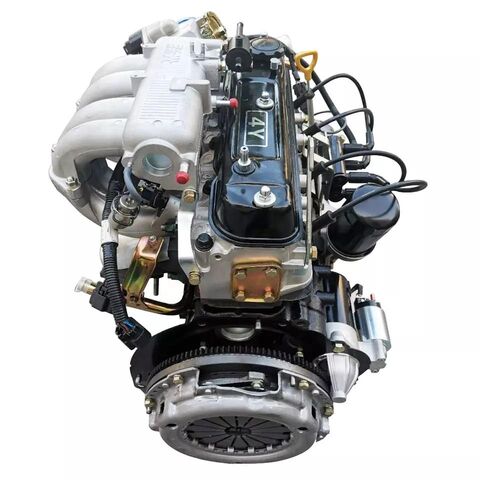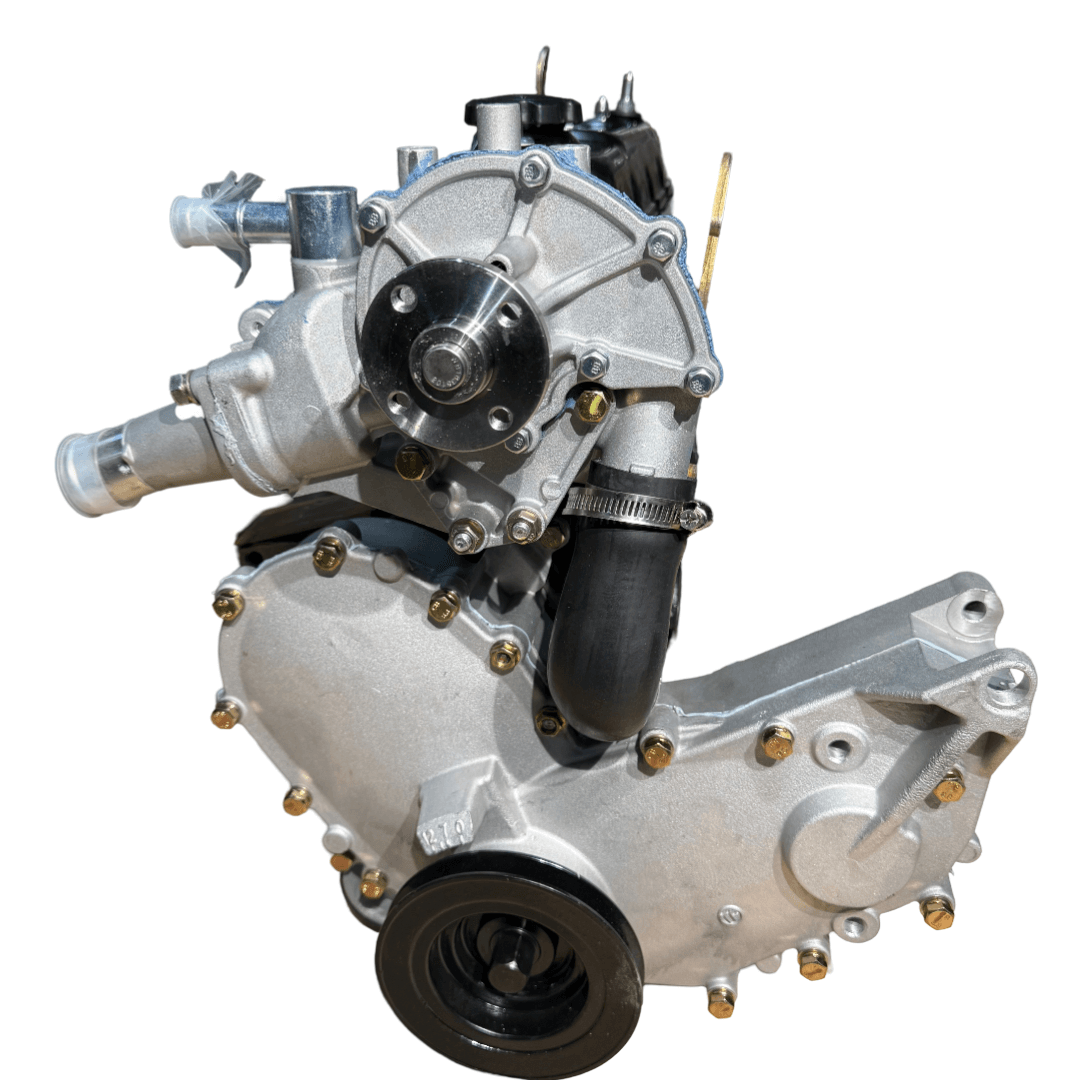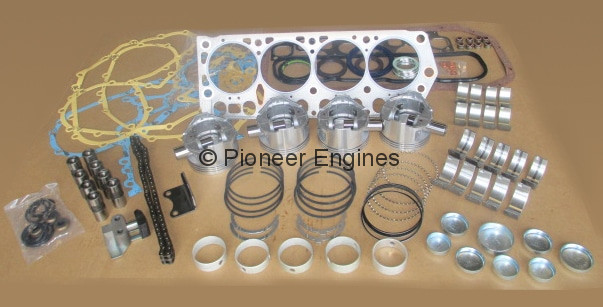A Complete Guide to Understanding the 4Y Engine’s Performance Capabilities
A Complete Guide to Understanding the 4Y Engine’s Performance Capabilities
Blog Article
Why the Engine Is the most effective Option for Efficiency and Effectiveness in Your Car
The engine remains an essential component in auto style, primarily as a result of its significant influence on both efficiency and efficiency. As improvements in technology allow smaller sized engines to deliver exceptional power while maximizing fuel economic climate, the integration of features such as turbocharging and crossbreed systems comes to be increasingly important. These technologies not only enhance driving experience however additionally address environmental issues. Nevertheless, the inquiry arises: how do these aspects integrate to redefine our understanding of automotive performance? Exploring this balance exposes much deeper understandings right into the future of engine layout.
Understanding Engine Types
Understanding the numerous sorts of engines is crucial for optimizing efficiency and performance in vehicle style. The main engine types include inner burning engines (ICE), electrical engines, and hybrid systems, each offering distinct advantages and constraints.
Inner burning engines, which can be further categorized right into fuel and diesel versions, rely upon the combustion of gas to create power. Gas engines commonly give greater RPMs and much better velocity, while diesel engines are known for their torque and fuel efficiency, making them excellent for sturdy applications.
Electric engines, on the various other hand, make use of electric motors powered by batteries or fuel cells. They supply immediate torque distribution, leading to smooth acceleration and lower exhausts. The performance of electric engines is considerably higher than that of ICEs, making them a prominent selection for eco-conscious consumers.
Crossbreed systems integrate both inner combustion and electrical engines, leveraging the staminas of both modern technologies. They enhance gas usage by making use of electric power at reduced speeds and switching over to gasoline or diesel for greater rates or much heavier lots.
Choosing the appropriate engine type is crucial for accomplishing wanted efficiency metrics and environmental sustainability in contemporary automotive engineering.
The Effect of Engine Size
Engine size often plays a critical function in identifying a vehicle's performance and performance. Normally gauged in liters or cubic centimeters, engine size straight affects the power output and torque attributes of a lorry. Larger engines normally generate more horsepower, allowing better velocity and greater full throttle. This is especially useful in applications requiring robust performance, such as cars and sturdy vehicles.
Nevertheless, enhanced engine size typically correlates with decreased fuel effectiveness. Larger engines take in more fuel, resulting in higher emissions and functional prices. Manufacturers must stabilize the need for power with the demand for gas economic situation. Smaller sized engines can provide ample efficiency for daily driving while promoting better effectiveness, making them a prominent option in mid-size and small automobiles.
In addition, improvements in engine design, such as turbocharging and straight fuel injection, enable smaller engines to attain power levels equivalent to their larger equivalents. This pattern emphasizes the relevance of not only concentrating on engine dimension however additionally thinking about total automobile layout and innovation (4y engine). Ultimately, the effect of engine dimension on performance and performance underscores the requirement for consumers to examine their specific driving preferences and requirements when picking a car
Advanced Engine Technologies
Innovations in engine modern technologies have actually significantly reshaped the landscape of vehicle efficiency and efficiency, building upon the foundational principles established by engine dimension. Notably, improvements such as turbocharging and straight gas shot have actually enabled smaller engines to deliver power levels previously connected with bigger equivalents. Turbochargers press air getting in the engine, permitting for raised power output without a corresponding increase in engine size, while direct shot optimizes gas distribution, enhancing burning performance.
In addition, variable shutoff timing systems have actually arised as an essential modern technology, permitting engines to readjust shutoff procedure based on driving conditions. This adaptability improves both efficiency throughout velocity and gas performance throughout travelling. Hybrid and electric engine technologies further highlight the change in vehicle style, combining traditional internal burning engines with electrical motors to maximize efficiency while lowering discharges.
Moreover, developments in products scientific research have led to lighter, extra sturdy engine elements, even more boosting efficiency and durability. The integration of innovative electronics and engine control units additionally permits real-time adjustments, making certain ideal efficiency throughout various problems. Collectively, these innovative engine innovations not just enhance vehicle efficiency however additionally add to a more lasting automotive future, showing the ongoing advancement of engine design.
Harmonizing Power and Efficiency
Striking an equilibrium between power and effectiveness is Full Report essential in modern-day automobile layout as producers look for to meet significantly strict exhausts regulations while satisfying customer demand for efficiency (4y engine). The challenge depends on optimizing engine features to deliver robust power outcome without sacrificing fuel economic situation
To achieve this balance, engineers employ different strategies, such as turbocharging, which improves engine power by compeling in even more air, permitting a smaller sized engine variation that improves gas efficiency. Variable valve timing innovations additionally play a significant role, allowing engines to readjust their efficiency characteristics based on driving conditions, consequently boosting both power and efficiency.
Additionally, developments in products and producing methods have actually caused lighter engine parts, which lower total vehicle weight Resources and improve fuel efficiency without compromising power. Crossbreed modern technologies have likewise emerged as a viable remedy, incorporating conventional interior combustion engines with electric powertrains to offer a boost in performance while maintaining reduced exhausts.

Future Trends in Engine Layout

Furthermore, the growth of sophisticated products, such as high-strength alloys and lightweight composites, is readied to transform engine parts. These materials not just reduce weight however additionally improve thermal performance, thereby enhancing efficiency. Additionally, makers are discovering variable compression ratios, enabling engines to adjust to different driving conditions, boosting both power output and fuel economic situation.
Further, the increase of expert system and artificial intelligence in engine layout is enabling predictive maintenance and real-time efficiency optimization. This technology can result in engines that self-adjust for maximum effectiveness based upon driving patterns.

Final Thought
To conclude, the engine offers as an essential element in accomplishing ideal efficiency and effectiveness in modern-day lorries. Advanced modern technologies, such as turbocharging and crossbreed systems, enhance power output while minimizing fuel consumption and emissions. The interplay in between engine dimension and layout remains to advance, driving technologies that stabilize electrifying efficiency with ecological sustainability. As vehicle design advances, the concentrate on developing efficient, powerful engines will certainly continue to be extremely important in forming the future of transportation.
Additionally, advancements in engine layout, such as turbocharging and direct fuel shot, enable smaller engines to attain power degrees similar to their larger equivalents.Advancements in engine innovations have actually dramatically reshaped the landscape of automotive efficiency and efficiency, structure upon the foundational principles established by engine dimension. Turbochargers compress air entering the engine, permitting for boosted power output without a matching increase in engine dimension, while direct shot optimizes gas delivery, improving combustion effectiveness.
Hybrid and electric engine modern technologies additionally illustrate the shift in auto style, incorporating conventional inner combustion engines with electrical motors to optimize efficiency while decreasing exhausts.
Collectively, these sophisticated engine innovations not just enhance lorry performance yet also contribute to a much more lasting automobile future, showing the recurring evolution of engine style. (4y engine)
Report this page